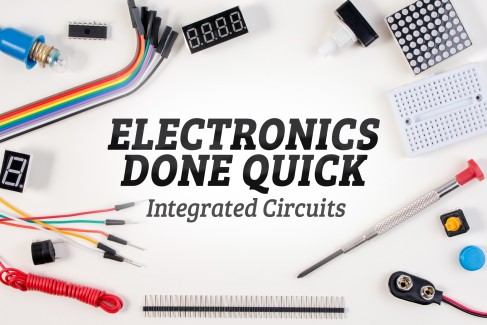Have you ever heard of a 1940s computer called the ENIAC? It was about the same length and weight as three to four double-decker buses and contained 18,000 electronic switches known as vacuum tubes. Despite its gigantic size, it was thousands of times less powerful than a modern laptop.
What made it possible was the invention of the integrated circuit (IC) in 1958. It's a neat way of cramming hundreds, thousands, millions, or even billions of electronic components onto tiny chips of silicon no bigger than a fingernail.
At the heart of an integrated circuit are layers of silicon wafers (semiconductors) and copper that come together to create the electronic components that we use today in our breadboards – resistors, capacitors, diodes, transistors, etc. all in a miniaturized form.
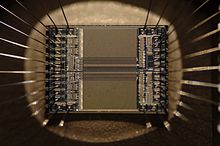
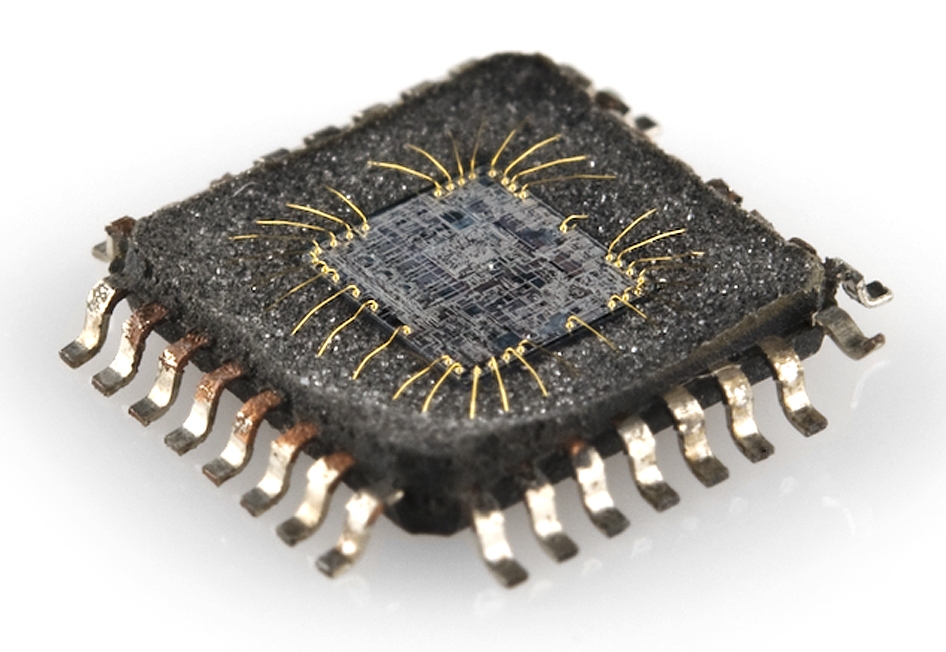
Source: Wikipedia Source: SparkFun
Generations
In the early days of simple integrated circuits, each chip was limited to only dozens of components on a chip in what was called Small-Scale Integration (SSI). The number of ICs manufactured was quite low by today's standards. Medium-Scale Integration (MSI) soon followed, with hundreds of components in an area of the same size. Large-Scale Integration (LSI) brought thousands of components, Very-Large-Scale Integration (VLSI) gave us tens of thousands, and Ultra Large Scale (ULSI) made it possible to have millions and billions of transistors on one chip.

Mounting Style
One of the main distinguishing integrated circuit characteristics is the way they mount to a circuit board. All packages fall into one of two mounting styles:
Through-hole
Through-hole packages are generally bigger, and much easier to work with. They're designed to be stuck through one side of a board and soldered to the other side.
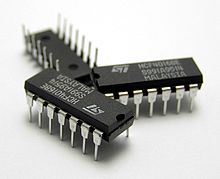
Source: Wikipedia
Surface-mount
Surface-mount packages range in size from small to minuscule. They are all designed to sit on one side of a circuit board and be soldered to the surface. The pins of an SMD package either extrude out of the sides, perpendicular to the chip or are sometimes arranged in a matrix on the bottom of the chip. ICs in this form factor usually require special tools to aid in the assembly process.
![]()
Source: Geoff's Projects
Polarity Marking and Pin Numbering
All ICs are polarized, and every pin is unique in terms of both location and function. This means the package has to have some way to convey which pin is which. Most ICs will use either a notch, a dot, or both to indicate which pin is the first pin.
Once you know where the first pin is, the remaining pin numbers increase sequentially as you move counterclockwise around the chip.

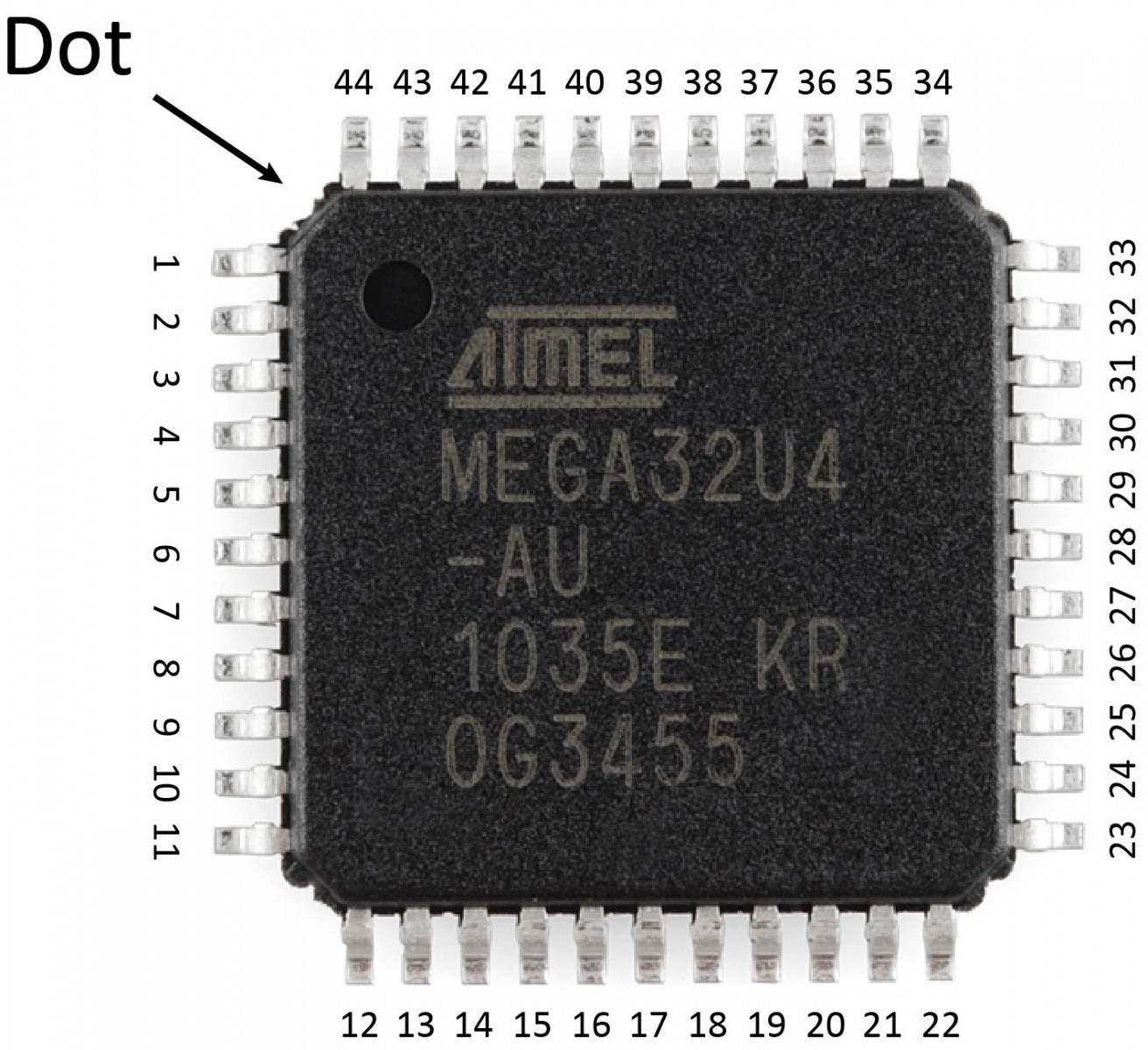
Integrated circuits come in all shapes and sizes, and can all be wrapped up into three general categories:
Digital Integrated Circuits
These ICs work on the binary system that powers all of the digital electronics of today, using a system of 1s and 0s to make some amazing things happen. In digital integrated circuits, you’ll find transistors, logic gates, etc. all bundled into a single chip to power things like an Arduino or Raspberry Pi.

Source: Bucknell
Analog Integrated Circuits
Unlike its digital cousin, the analog IC works by tackling those always-changing analog signals and can perform some heavy tasks including filtering, amplification, and modulation.
Generally, analog circuits are connected to devices that collect signals from the environment or send signals back to the environment.
For example, an analog circuit modifies a fluctuating vocal signal coming from a microphone in some useful way—such as amplifying it or filtering it of undesirable noise.
Another typical use for an analog circuit is to control some device in response to continual changes in the environment. For example, a temperature sensor sends a varying signal to a thermostat, which can be programmed to turn an air conditioner, heater, or oven on and off once the signal has reached a certain value.
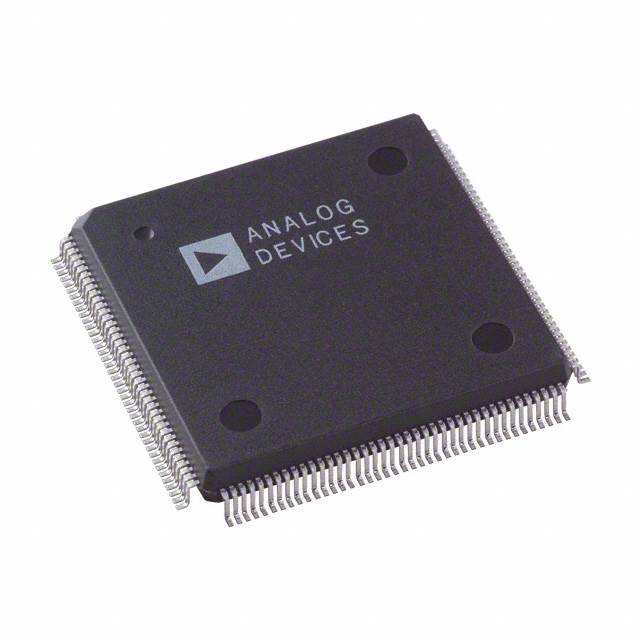
Source: Digikey
Mixed-Signal Integrated Circuits
When you combine both digital and analog functionality on a single chip, then you’ve created a mixed-signal IC. You’ll find these guys being used for things like clocking/timing regulation and digital-to-analog or analog-to-digital conversion.

The brain of an integrated circuit is skillfully hidden beneath a protective package that you’re used to seeing on a circuit board. Package types are all standardized, making it easy to solder to circuit boards or connect to breadboards for prototyping. On each package, there’s a set of silver pins, and these allow the IC to connect to other parts of your circuit. While there are different types of packages, we’ll cover the most common that you might encounter in your projects:

Source: SukhDev Group
Dual In-line Packages (DIP)
This package type is part of the through-hole family, and you can easily recognize these chips by looking for their long, rectangular shapes with parallel rows of pins. This package type is ideal for use on breadboards and can include anywhere from 4 to 64 pins.
Aside from being used in breadboards, DIP ICs can also be soldered into PCBs. They're inserted into one side of the board and soldered into place on the other side. Sometimes, instead of soldering directly to the IC, it's a good idea to socket the chip. Using sockets allows for a DIP IC to be removed and swapped out easily.
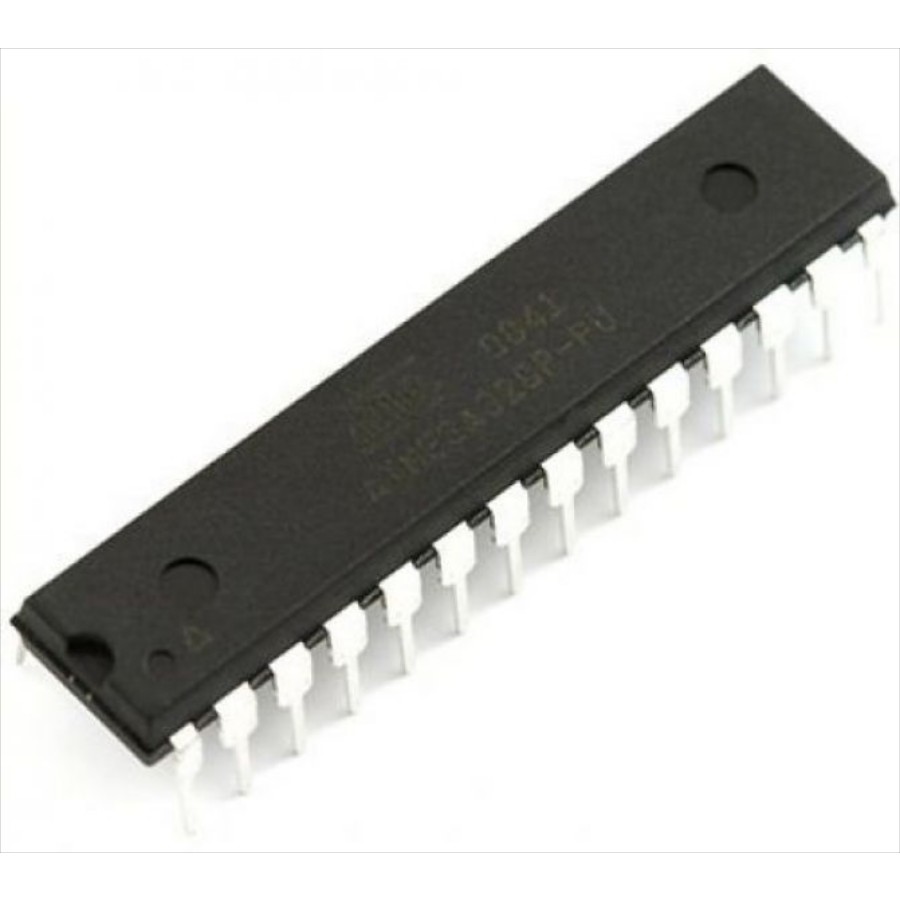

Source: RobotShop Source: RobotShop
Small Outline Packages (SOP)
Small outline packages are the surface-mount cousin of the DIP. It's what you'd get if you bent all the pins on a DIP outward, and shrunk it down to size. These chips won’t be used in your breadboarding experiments and will require some advanced machinery to apply precisely. SOP ICs come in several varieties, including Thin Small-Outline Packages (TSOP) and Thin-Shrink Small-Outline Packages (TSSOP).

Source: Wikipedia
Quad Flat Packages (QFP)
This package type is easily identified by pins coming out from all four directions of the IC. These useful chips can have anywhere from 8 to more than 70 pins on each side, which can give them a whopping 300+ pins to work with during a PCB layout process! You’ll find tons of microprocessors using the QFP package type, including the popular ATmega328.
If you clipped the legs of a QFP, you would get a quad-flat no-leads (QFN) package. The connections on QFN packages are tiny, exposed pads on the bottom corner edges of the IC. Sometimes they wrap around and are exposed on both the side and bottom, other packages only expose the pad on the bottom of the chip.
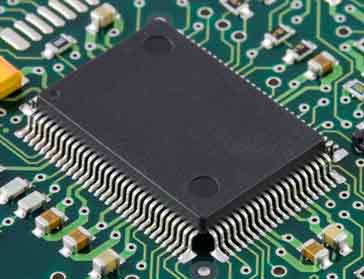
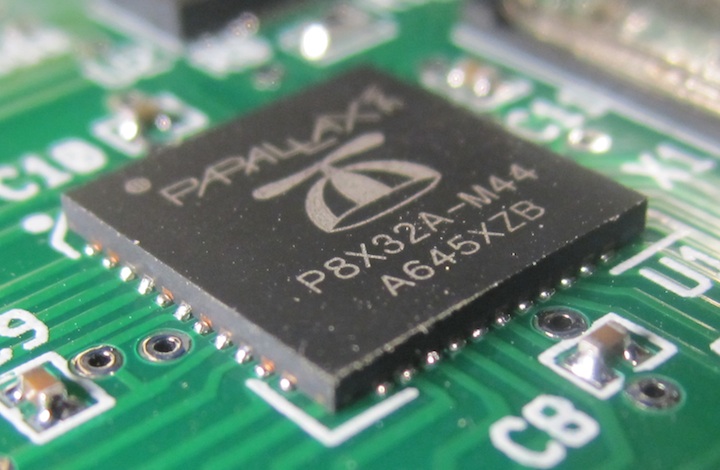
Source: Electronics Notes Source: Parallax Forums
Ball Grid Arrays (BGA)
The last package type, and also the most advanced is the Ball Grid Array. These complex package types include small balls of solder on the bottom arranged in a pattern or grid. Routing all of the pins on a BGA can be quite difficult, often taking hours to route the nets out of the tight spacing (called fanout routing). You’ll find the BGA package type used for only the most advanced microprocessors, like those on the Raspberry Pi.
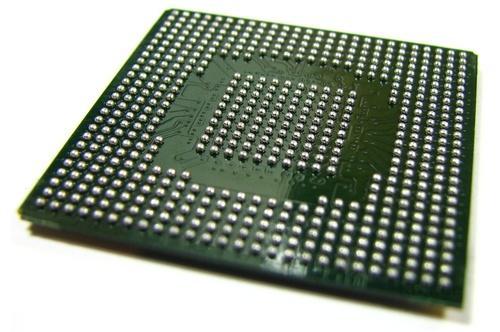
Source: IndiaMART
Integrated circuits are prevalent in so many forms across electronics, it's hard to cover everything. Here are a few of the more common ICs.
Logic Gates
Logic gates, the building blocks of much more ICs themselves, can be packaged into their own integrated circuit. Some logic gate ICs might contain a handful of gates in one package, like this quad-input AND gate:
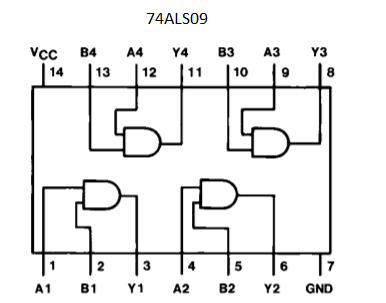
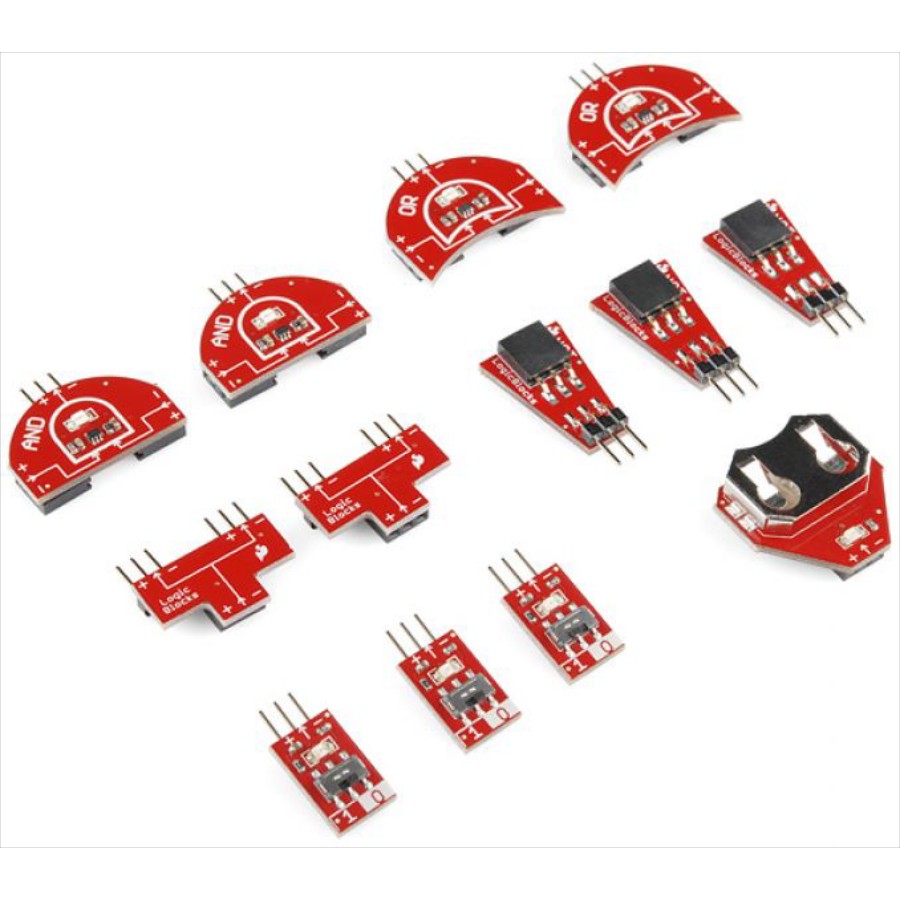
Source: NightFire Electronics Source: RobotShop
Logic gates can be connected inside an IC to create timers, counters, latches, shift registers, and other basic logic circuitry.
Timers
Timer IC is a highly stable integrated circuit that can produce accurate time delays and oscillations. Due to its relative simplicity, ease of use, and low cost, it has been used in thousands of applications and is still widely available.
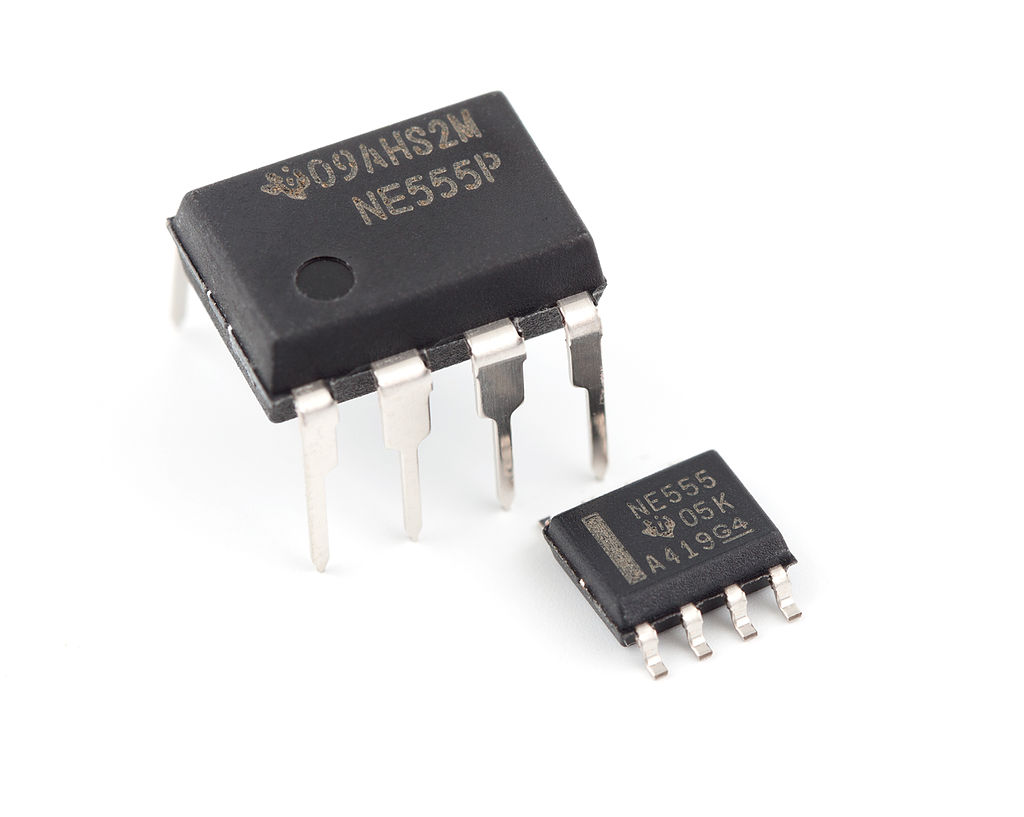
Source: Wikipedia
Operational Amplifiers
Operational Amplifiers, also known as op-amps, are basically voltage-amplifying devices. They are a core part of analog devices. They are used often in signal conditioning, filtering, or other mathematical operations (addition, subtraction, integration, and differentiation), giving it the name Operational Amplifier.
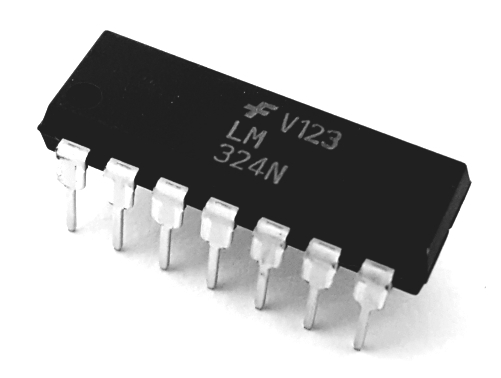
Source: West Florida Components
Memory
Memory is composed of dense arrays of parallel circuits that use their voltage states to store information. Memory also stores the temporary sequence of instructions, or programs, for the microprocessor.
Manufacturers continually strive to reduce the size of memory circuits to increase capability without increasing space. In addition, smaller components typically use less power, operate more efficiently, and cost less to manufacture.
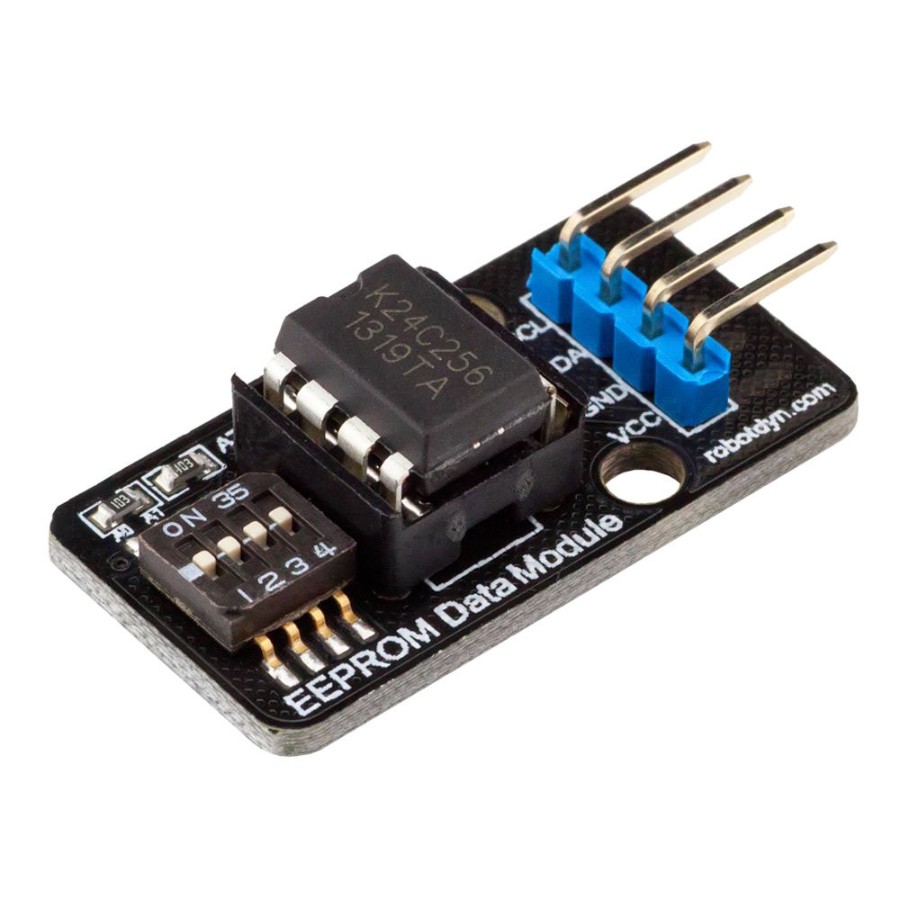
Source: RobotShop
Microcontrollers, Microprocessors, FPGAs
Microcontrollers, microprocessors, and FPGAs, all packing thousands, millions, and even billions of transistors into tiny chips, are all integrated circuits. These components exist in a wide range in functionality, complexity, and size; from an 8-bit microcontroller like the ATmega328 in an Arduino, to a complex 64-bit, multi-core microprocessor organizing activity in your computer.
These components are usually the largest IC in a circuit. Simple microcontrollers can be found in packages ranging from DIP to QFP/QFN, with pin counts lying somewhere between eight and a hundred. As these components grow in complexity, the package gets equally complex.
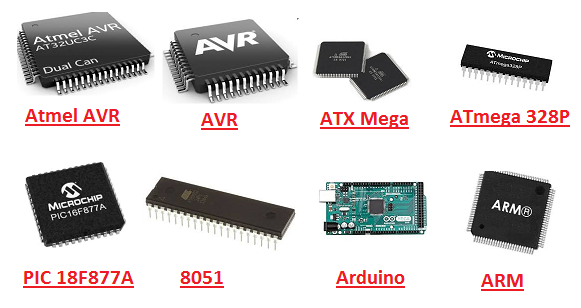
Source: The Engineering Projects
Sensors
Modern digital sensors, like temperature sensors, accelerometers, and gyroscopes all come packed into an integrated circuit.
These ICs are usually smaller than the microcontrollers, or other ICs on a circuit board, with pin counts in the three to twenty range. DIP sensor ICs are becoming a rarity, as modern components are usually found in QFP, QFN, and even BGA packages.
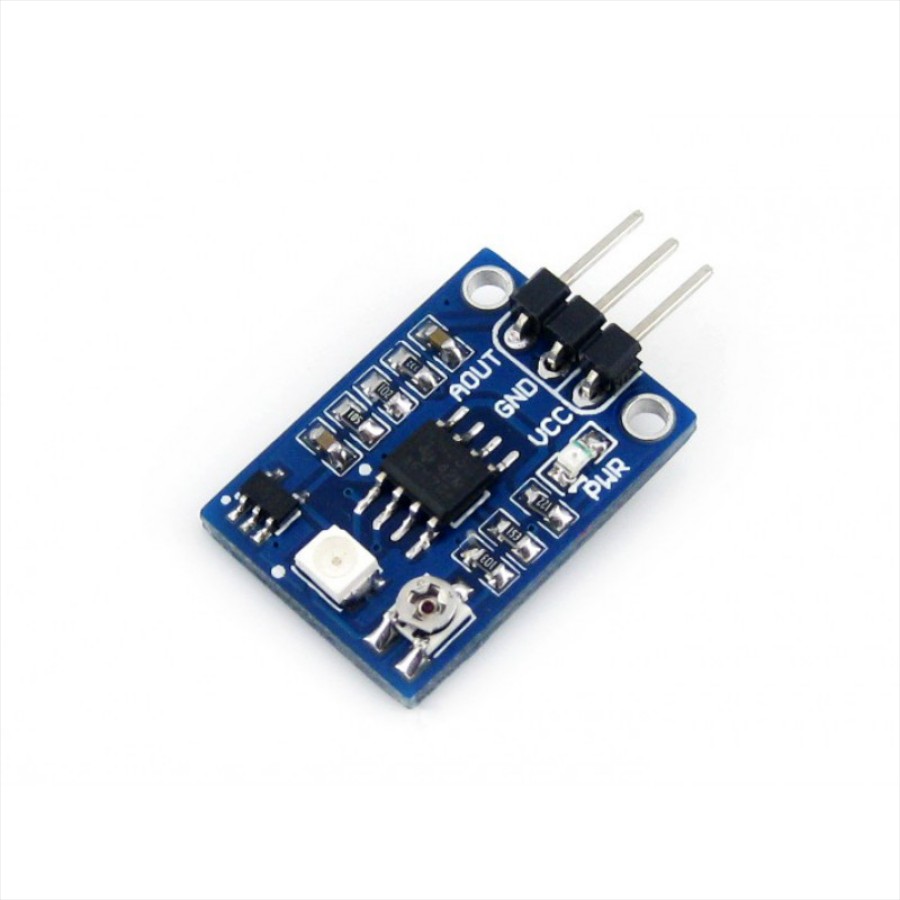
Source: RobotShop
Radio-frequency ICs (RFICs)
Radio-frequency ICs (RFICs) are widely used in mobile phones and wireless devices. RFICs are analog circuits that usually run in the frequency range of 3 kHz to 2.4 GHz
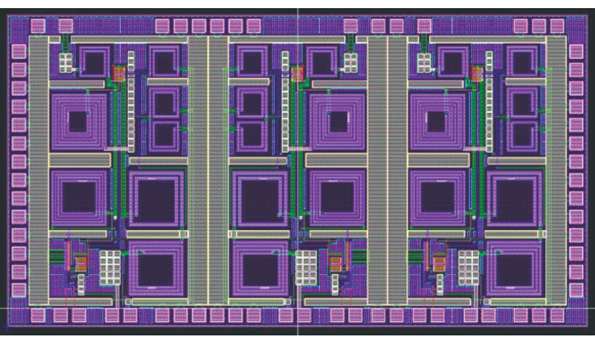
Source: Microwaves & RF
Monolithic Microwave ICs (MMICs)
A special type of RFIC is known as a monolithic microwave IC (MMIC; also called microwave monolithic IC). These circuits usually run in the 2 to 100 GHz range, or microwave frequencies, and are used in radar systems, satellite communications, and as power amplifiers for cellular telephones.
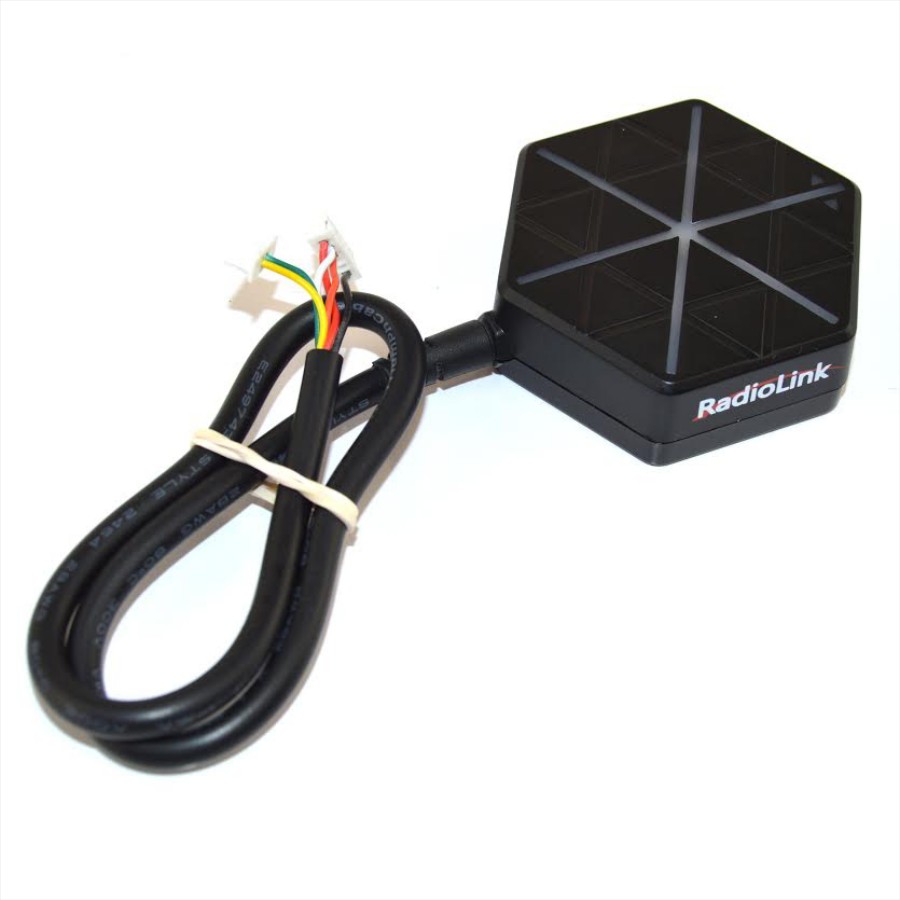
Source: RobotShop
Application-specific ICs (ASICs)
An application-specific IC (ASIC) can be either a digital or an analog circuit. As their name implies, ASICs are not reconfigurable. They perform only one specific function. For example, a speed controller IC for a remote control car is hard-wired to do one job and does not contain any ability to follow alternate instructions.
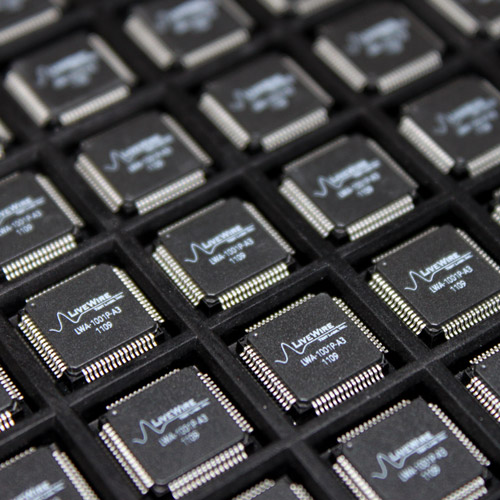
Source: Wikipedia
The integrated circuit is truly the brains behind all of today’s electronic devices, it will be hard not to find them everywhere, in radars, televisions, video processing, missiles, and yes, even juice makers! The list is endless. Just take a quick scan of all the electronic devices in your home, and you’re bound to find an IC inside nearly all of them. I'll leave you with a video about how ICs are made.


